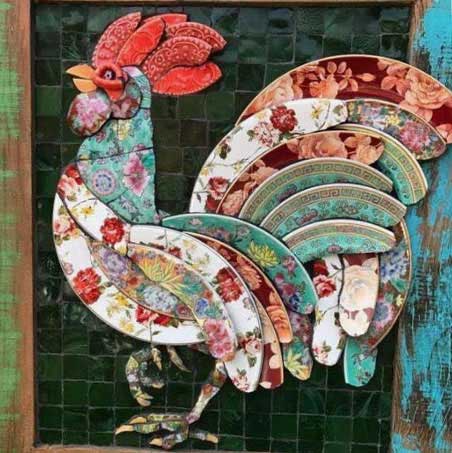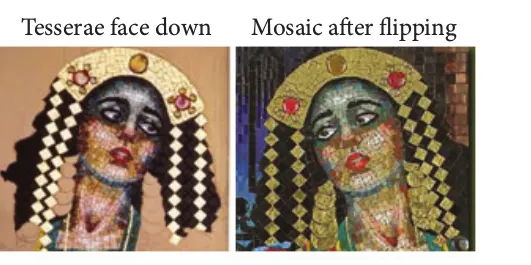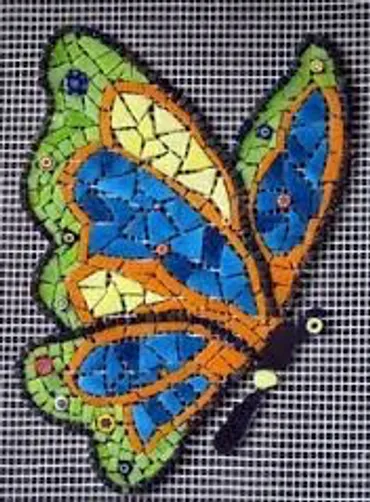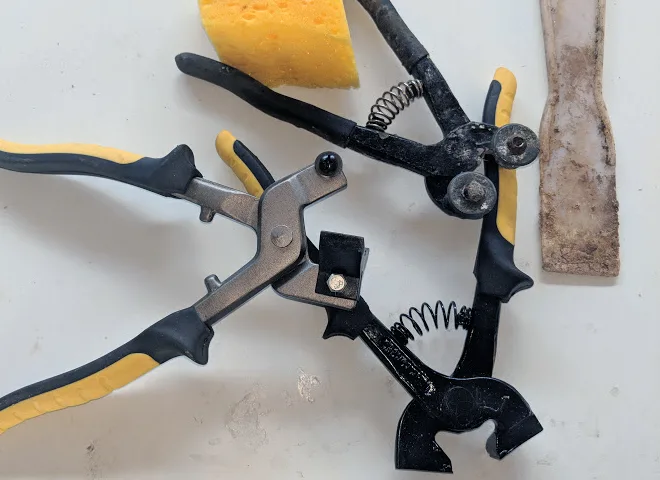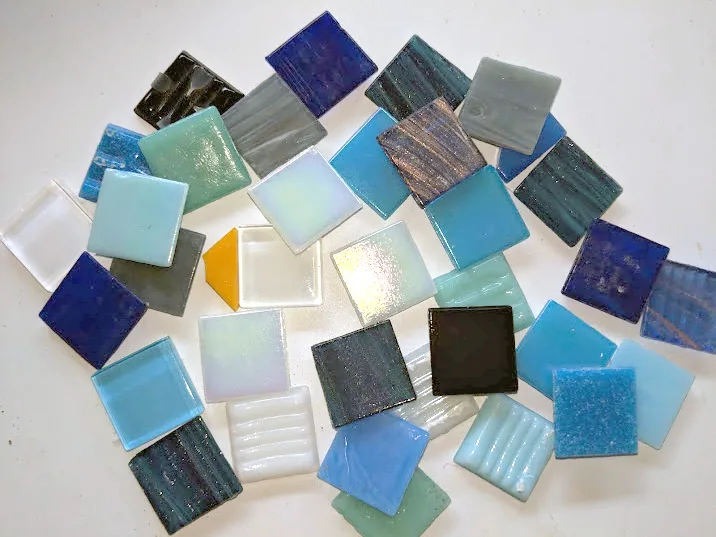Mosaic Terminology
Let's enjoy creating mosaics !
Pique Assiette
Pique Assiette, is the french term for plate thief or scrounger! It’s a form of Mosaic originating in France. … Pique Assiette is a style of mosaic that incorporates pieces of broken ceramics—plates, dishes, cups, tiles — and other found objects into the design. Many of my students want to create something decorative out of Grandma’s inherited crockery!
Indirect Method
Indirect method – adhere tesserae face down on a temporary surface (craft paper) with a temporary glue like Aquadhere or flour & water. Using this process, you must be able to envision the mirror image of the design. You work looking at the back of the tiles, (which are not always the same as the front) therefore you don’t really see the upside of the mosaic until you flip it.
Direct Method
Direct method – the design is sketched onto a base and the tesserae are adhered directly onto it. We will use fibreglass mesh and mostly Blue Board (cement fibre sheeting). When complete, a layer of grout can be spread over the tiles then wiped off, filling any spaces between the tiles.

